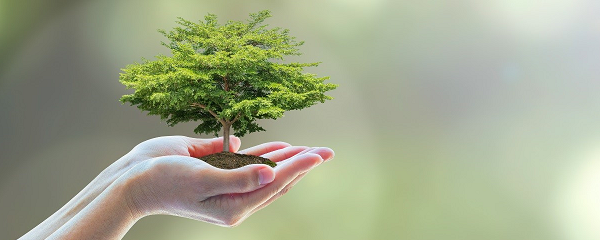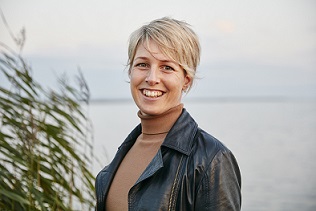100 years of sustainable chemistry
What exactly do we mean when we talk about ‘going green’ in the chemicals and coatings industry. For Perstorp the drive towards renewable, low carbon footprint solutions is part of the company’s future but it also takes them back to their roots.

For Perstorp the drive towards renewable, low carbon footprint solutions is part of the company’s future but it also takes them back to their roots. By developing products using renewable raw materials and energy provided by nature, in some ways they are returning to second generation fuel and bio-based chemicals that they produced more than 100 years ago. Industry has become more aware of the need to be sustainable. This is particularly true in the chemicals and coatings industry, which since the start of the plastic age has relied heavily on fossil-based raw materials and organic solvents that emit Volatile Organic Compounds (VOC).
Today we are seeing a move away from fossil-based to renewable resins and coatings. There is also a strong trend towards low/no VOC and waterborne solutions. From the very beginning Perstorp has been a pioneer in renewable raw materials for chemicals. Since then, the company has continued to take an active lead in finding new ways for leveraging sustainability in different parts of its business.
From petro chemistry to retro chemistry
Some 100 years ago, even though sustainability wasn’t a ‘thing’, Perstorp cultivated an awareness of environmental responsibility. The company was started by utilizing the local natural resources of the heavily wooded region of southern Sweden to produce what we today call second generation bio-based chemicals and fuels. So, there really is a ‘retro chemistry’ aspect integrated into sustainable chemistry.
That is why in 2010, Perstorp along with the four other international chemical companies in Stenungsund, Sweden, developed the Sustainable Chemistry 2030 vision of a sustainable society and a thriving chemical industry. According to the vision, the group of companies formed the center for sustainable products with production based on renewable and recycled raw materials and energy.
The Sustainable Chemistry 2030 vision includes the aim for organic molecules like ethylene, propylene, and natural gas to be derived from renewable and recycled sources such as bio-feedstock and recycled plastics. In doing so the industry’s dependence on fossil oil and gas can be significantly reduced, or even removed altogether. This can often be achieved without affecting either the chemical processes in the factories or the quality of the end products.
This vision also ties in closely with the goals of the Skogskemi (Forest Chemistry) innovation development project, financed by the Swedish Government’s VINNOVA’s program Challenge-Driven Innovation. Here, Perstorp and the Stenungsund hub have joined with other interested parties in Sweden to investigate and develop the value chain with the forest industry as a supplier of renewable feedstock for the chemical industry.
This sustainable focus has remained a core part of Perstorp. In fact, the company’s initiatives are now centered around contributing to six of the United Nations’ Sustainable Development Goals – one of which is ensuring a climate neutral world through sustainable and environmentally positive developments.

Customers say: “Sustainability matters”
It is one thing to push the development of sustainable chemistry, and to some extent Perstorp’s enterprise in sustainability has been ahead of the game.
However, in the last few years customers have become increasingly aware of the benefits of sustainable chemistry, resulting in a steady growth in market demand. Discussions with key customers have also shown that sustainability is of increasing importance. Key product requirements now include renewable raw materials and low carbon footprint products.
In addition to eliminating fossil-based raw materials the overall sustainability and environmental impact of a customer’s end-product is becoming key. For Perstorp that means also looking at product end-of-life (biodegradability and recyclability) and improving the sustainability of the basic building blocks and feedstock elements. It also means enabling more sustainable end-product properties like lead-free PVC, next generation plasticizer, bioplastics and, especially relevant to coatings, reducing the level of VOCs released as the coating dries.

Beautiful water borne alkyds for the coatings market
VOCs are neither good for the environment or for the people applying the coatings. So, minimizing VOCs is a focus area for the paint / coatings industry. One way to do this is to use waterborne acrylics instead of solvent borne alkyds for paints and coatings.
An even better solution is to use waterborne alkyds based on sustainable chemistry. Perstorp is supporting the industry in making this move with its beautiful alkyds project, offering technical support and in-depth knowledge of three waterborne alkyds technologies.
As well as having a low VOC, waterborne alkyds also have a high renewable content and a lower carbon footprint. They offer superior wood protection in comparison to acrylics and can be combined with other resin technologies to provide enhanced protection while still helping to minimize the environmental impact of coatings.
Another natural beauty of the waterborne alkyds is that only exposure to air is needed for the drying process to occur, no other additives are needed. Other hazardous chemicals such as cobalt and MEKO (Methylethyl ketone oxime) which are often present in solvent borne alkyds can be replaced or are simply not needed at all.
Voxtar™ – a bio-sustainable option since 2010
Switching to waterborne alkyds is an important first step to sustainable products. To go even further, waterborne alkyds can be made even more sustainable with renewable pentaerythritol solutions like Perstorp’s Voxtar.
Voxtar is the world´s first renewable pentaerythritol product and was first introduced to the market back in 2010. Based on partly or fully renewable raw materials through a mass balance concept the Voxtar products give the same trusted efficiency, security, and high performance as fossil-based pentaerythritol products. From cradle-to-grave, Voxtar can reduce the carbon footprint by up to 80% compared to conventional, fossil-based pentaerythritol products.
The main application area of Voxtar in coatings is as a branching monomer for alkyd resins used in paints. Voxtar improves the sustainability profile of water borne alkyd resins by offering a reduction in carbon footprint. And compared to acrylics, it also delivers outstanding protection of wood and other coated materials.

Extending the benefits of renewable resources
As part of its ongoing development, Perstorp is working on renewable replacements for other fossil-based products. This will present manufacturers with a choice of sustainable solutions, based on renewable resources, to meet the needs of different markets.
When it comes to ‘going green’ in the chemicals and coatings industry, it is all about being renewable and sustainable, two cornerstones of Perstorp’s commitment to the industry and a core focus within the company. And while other companies may talk big about sustainability, for over 100 years Perstorp has been letting its actions show its ongoing and active commitment to sustainable chemistry.

Author: Anna Berggren, Market Segment Manager och Business Development Manager Perstorp
